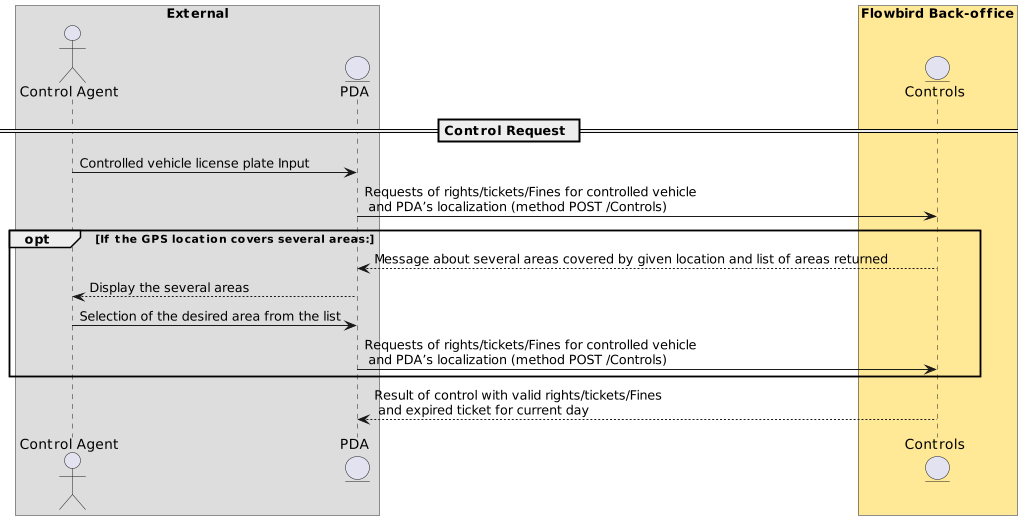Using the PDA, the control agent sends the license plate of the car being controlled and its GSP localization to Controls service. See POST /controls request example in the appendix.
The Control service then requests Parks and ParkingRights (StreetSmart architecture) or PRM (Legacy architecture) applications to retrieve:
•The current Control status:
oOK: The vehicle is allowed to park
oKO: The vehicle is not allowed to park
•The Contract allowing the vehicle to park at the current location
•Any Ticket(s) allowing the vehicle to park at the current location
•Historical information of the Contracts. This list of contracts does not necessarily provide a right to park at the current time or location.
•Historical information of the Tickets. This list of tickets does not necessarily provide a right to park at the current time or location
•A List of validity areas retrieved and used for rights check
The application that calls the interface to receive the resulting resource content in the response. Using this information, the application/agent can:
•Identify if the vehicle has active rights to park (OK Control)
•Investigate the contract and ticket history of the vehicle to define if a Fine needs to be create (KO Control)
The POST Controls interface can also be used:
•By automated control vehicles. In this case, the investigation of KO Controls will be done by an agent
•For statistic reasons. In this case, the enforcement application sends control details (with control status) and controls application stored data. This data will be used by a reporting solution to be used for statistics, agent guidance etc.

Step 1: Controls request from PDA